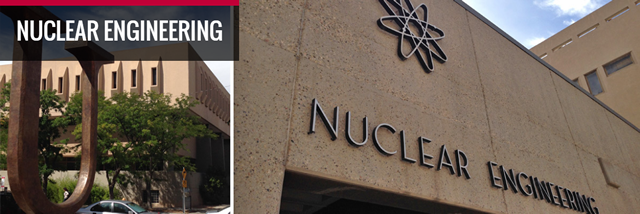
Nuclear Engineering ETDs
Publication Date
Summer 7-11-2023
Abstract
Scintillator detectors have become a leading choice of radiation detectors for a variety of applications, including space science. Due to their intrinsic characteristics, rare-earth inorganic scintillators provide the capability to detect both gamma and charged particles in a small detector. The response of these detectors is typically characterized using isotropic gamma sources. However, the light output produced in the scintillator from an incident gamma of a particular energy differs from the light output produced from an incident charged particle of the same energy; a phenomenon known as quenching. Using two types of rare-earth inorganic scintillators, Y2SiO5(YSO:Ce), and Gd₃Al₂Ga₃O₁₂(GAGG:Ce), we measured the light-output from incident proton energies from 1-25 MeV range using a 3 MV tandem accelerator and two reactions: Au(p,p)Au and 3He(d,p)4He. Using a variation of the Birks formula, I extracted the Birks’ parameter to understand the nonproportional lightoutput response of these materials as a function of temperature and dopant concentration.
Keywords
quenching, inorganic scintillators, proton light quenching, radiation detectors
Sponsors
Los Alamos National Laboratory
Document Type
Thesis
Language
English
Degree Name
Nuclear Engineering
Level of Degree
Masters
Department Name
Nuclear Engineering
First Committee Member (Chair)
Professor Adam A. Hecht
Second Committee Member
Professor Ganesh Balakrishnan
Third Committee Member
David Walter, PhD
Fourth Committee Member
Kurtis D. Bartlett, PhD
Fifth Committee Member
Caleb Roecker, PhD
Recommended Citation
Espinoza, Tatiana Nathaly. "Measurements of scintillation light quenching for protons in rare-earth inorganic scintillators." (2023). https://digitalrepository.unm.edu/ne_etds/116
